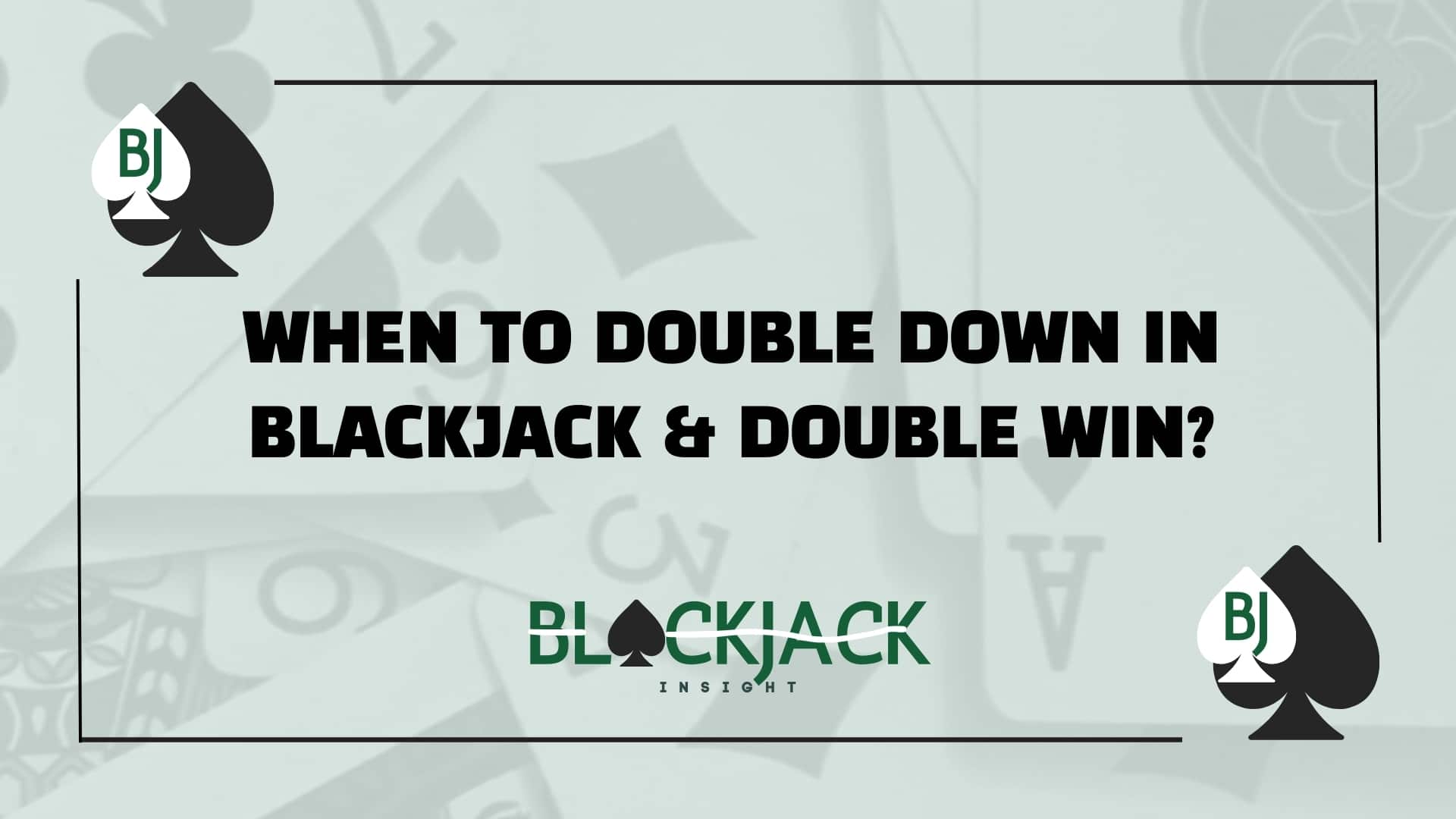When to Double Down in Blackjack & Double Win
Table Of Content
Doubling down in blackjack isn’t just flashy—it’s strategic. This guide breaks down when to double (like on 10s & 11s), when to hold back, and how to avoid rookie mistakes. Learn the math-backed moves that shift the odds in your favor and level up your game at the table.
Blackjack can feel like a game of luck, but once you get a grip on the strategy, it’s anything but. If you’ve ever sat at the table, chips stacked, staring down a soft 16 with sweaty palms, wondering whether to hit, stand, or double down… you’re not alone. And that’s exactly what we’re diving into today: when to double down in blackjack.
This move might sound fancy, but trust me—it’s one of the smartest plays in your blackjack toolkit. When used at the right time, doubling down can turn a decent hand into a winner and tilt the odds ever so slightly in your favor. That “slightly” might not sound like much, but over time, it’s everything.
So, When Can You Double Down in Blackjack?
Most blackjack tables allow doubling down on any two cards. Some more conservative ones only allow it on 9, 10, or 11. Always check the blackjack double down rules before you sit down; they’re usually printed right on the felt or displayed somewhere on the table.
Oh, and while you can double after splitting in some games, others don’t allow it. And trust me, nothing stings more than having pocket 8s, splitting them, and being told, “no double downs.” Ugh.
When Should You Double Down in Blackjack? (The Golden Scenarios)
There’s a reason why seasoned players memorize the blackjack double down chart. The right moment isn’t a wild guess; it’s backed by math. But let me break it down in simple terms without overwhelming you.
-
Double Down on 11 (Always, Unless Dealer Shows an Ace)
If you’ve got an 11, you’re in prime territory. Hit that double down button unless the dealer’s showing an ace. Why? Because 10-value cards are most common, and getting a 10 turns your hand into a beautiful 21. Cha-ching. If you don’t have information on 10-value cards, visit this blog.
-
Double on 10 When Dealer Shows 9 or Less
You’ve got a 10? Perfect. But make sure the dealer’s card isn’t a 10 or an ace. If they’re showing anything from 2 to 9, press that double. There’s a good shot you’ll land a 20 and have the edge.
-
Got a 9? Double If Dealer Has 3–6
Here’s where it gets a little more specific. A total of 9 is great for a double only if the dealer’s showing a weak card, specifically 3, 4, 5, or 6. If they’ve got a 2 or 7+, it’s better to just hit.
-
Soft Hands (Ace + 2 through 7)? Be Picky
This is where newbies often mess up. Let’s say you’ve got Ace-6 (that’s a soft 17). You can double down, but only if the dealer shows 3 through 6. Otherwise? Just hit.
Common Mistakes Players Make
Doubling on Weak Hands: For instance, going all-in on a Hard 12 because you “feel lucky.” Probability says that’s often a losing gamble.
Ignoring the Dealer’s Upcard: Doubling with total tunnel vision on your own cards is a surefire path to regret. Dealer 10 or Ace? Tread carefully.
Emotional Doubling: Chasing losses (“I’m gonna double this 8 vs. a dealer 10 ‘cause I’m in a hole”) rarely ends well. Another big bet just speeds up a potential bust.
Overestimating Soft Hands: Soft 17 or 18 can look tempting, but if the dealer is strong, that one card might not do enough to beat them.
The Psychology of the Move
I once watched a guy at the Bellagio chicken out of a textbook double with 11 against a dealer’s 6. He hit instead, got a 10 anyway, but only won his original bet. He shrugged. I cringed. That’s the difference between playing to win and playing not to lose.
Confidence is part of the strategy. When you know when to double in blackjack, you stop guessing and start playing smart. It doesn’t mean you’ll win every hand, but over time, those smart bets add up.
So, When to Double Down in Blackjack?
To wrap it up (without actually wrapping it up—since this isn’t a conclusion): double down when the odds are in your favor and the dealer is vulnerable. Use your 9s, 10s, and 11s wisely. Soft hands? Treat them gently unless the dealer’s weak.
Learning how to double down in blackjack and when to double down is one of the fastest ways to go from “just another tourist” to someone the dealer side-eyes for knowing what they’re doing.
Download Blackjack Double Down Chart

FAQs
1. Can I get more than one card after doubling down?
No, you only get one. After that, you stand automatically.
2. Is doubling an 11 always right?
Almost always. Some strategy variations advise caution vs. a dealer Ace, but it’s usually the go-to move.
3. Does single-deck vs. multi-deck change the doubling strategy?
Slightly. The principle remains, but the single-deck might have more restrictions or different house rules.
4. Is doubling down a good strategy?
Absolutely but only when used at the right time. It’s one of the most effective ways to increase your profits in blackjack when paired with basic strategy.



